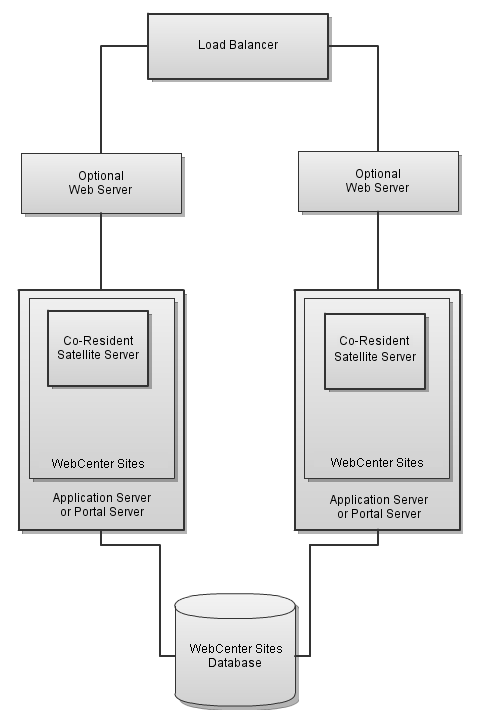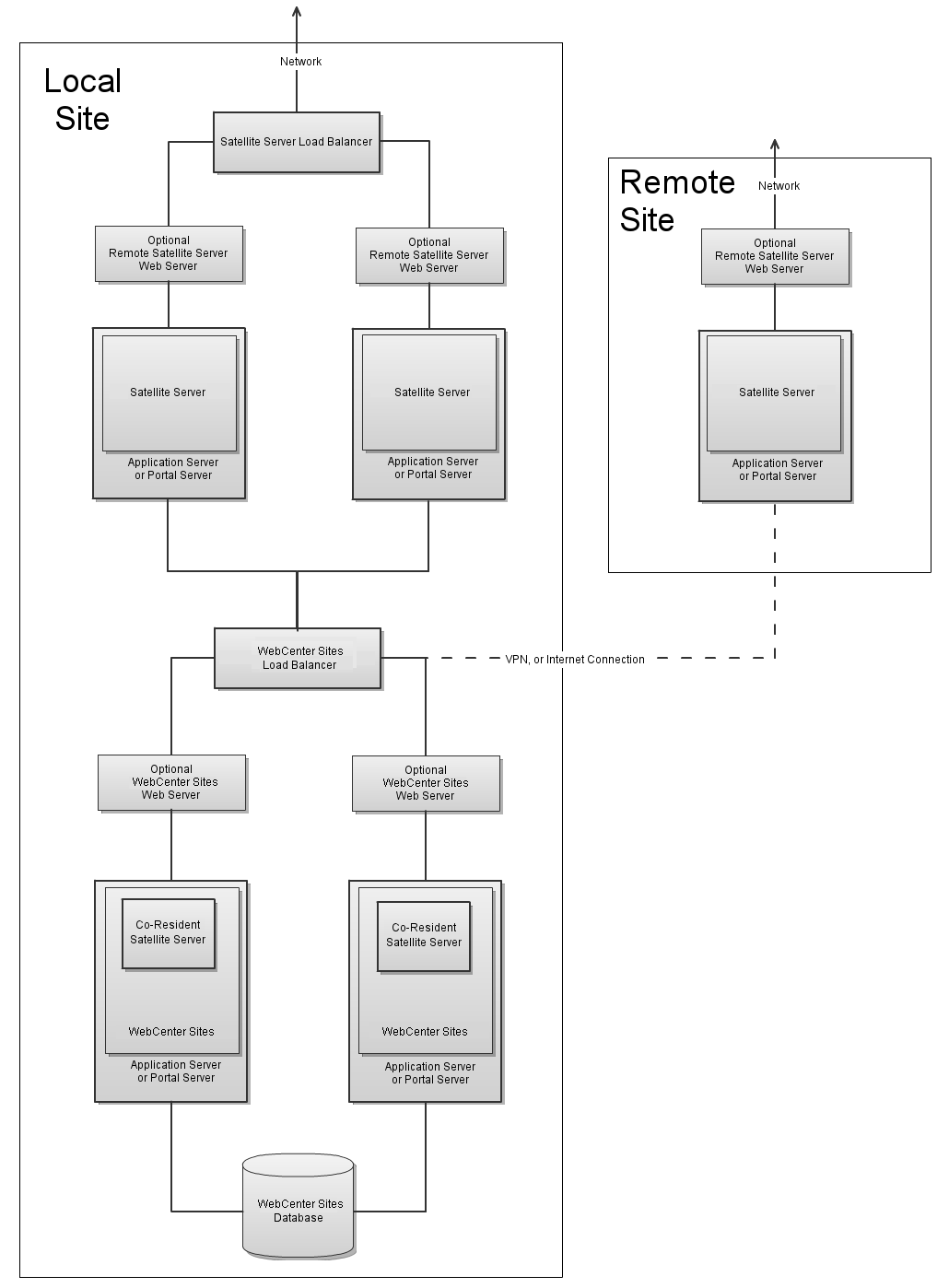8 Overview of Satellite Server
Satellite Server works with your WebCenter Sites system to provide the following benefits:
-
An additional layer of caching, supplementing the layer of caching that is provided by the WebCenter Sites cache.
-
Scalability. You can quickly and economically scale your WebCenter Sites system by adding remote installations of Satellite Server.
-
Improved performance. Satellite Server improves your website's performance by reducing the load on WebCenter Sites and moving content closer to the website visitors who will view it.
-
The ability to cache REST calls. For this reason you may wish to add a remote Satellite Server in front of a content management installation as well as a delivery installation.
This chapter introduces you to the configurations that you implement in order to receive these benefits.
You can configure Satellite Server in the following ways:
-
Co-Resident, which provides a second layer of caching and allows to simulate actual delivery of content on development and management systems.
-
Remote, which improves performance and scalability on delivery systems.
This document contains the following sections:
8.1 Co-Resident
WebCenter Sites ships with a copy of Satellite Server that is automatically installed and enabled on the same machine as your WebCenter Sites software. This is your co-resident Satellite Server. The purpose of the co-resident Satellite Server is to provide development and management systems with the ability to simulate page delivery as it occurs on the active site (delivery system).
Co-resident Satellite Server provides a layer of caching in addition to that provided by the WebCenter Sites cache. Satellite Server and the WebCenter Sites caches work in tandem to provide double-buffered caching, where copies of cached pages are stored in both the Satellite Server and the WebCenter Sites caches. The disadvantage of this configuration is increased memory utilization, as there are now two copies of each object stored in memory. For more information about double-buffered caching, see the caching chapter of the Oracle Fusion Middleware WebCenter Sites Developer's Guide. Figure 8-1 illustrates a co-resident installation of Satellite Server.
We recommend setting your co-resident Satellite Server host to optimize the performance of your WebCenter Sites system, as described in Section 10.1, "Adjusting Caching Conditions."
Figure 8-1 Co-Resident Satellite Server Architecture

Description of ''Figure 8-1 Co-Resident Satellite Server Architecture''
8.2 Remote
On delivery systems, you should set up one or more remote Satellite Server instances. At a minimum, a remote Satellite Server should be installed at the same geographic location as WebCenter Sites. For additional performance at remote geographic locations, additional remote Satellite Servers can be configured, as shown in Figure 8-2.
Figure 8-2 Remote Satellite Server Architecture

Description of ''Figure 8-2 Remote Satellite Server Architecture''
Remote installations of Satellite Server provide several benefits in addition to allowing double-buffered caching:
-
They improve the performance of the website by moving the content closer to its audience. In the preceding diagram, for instance, the main data center is located in New York City, while the secondary data centers are located in Europe and Asia.
-
They allow for improved scaling, as cached content does not require requests to be forwarded to WebCenter Sites and therefore free this resource to handle other tasks.
For information on installing and configuring remote instances of Satellite Server, see Section 9, "Procedures for Installing Remote Satellite Servers."